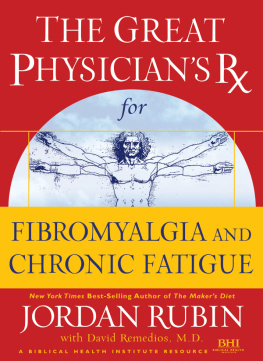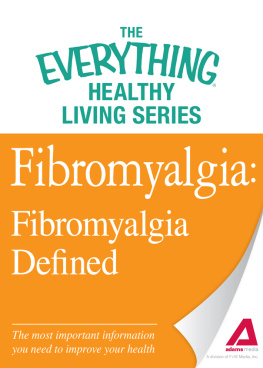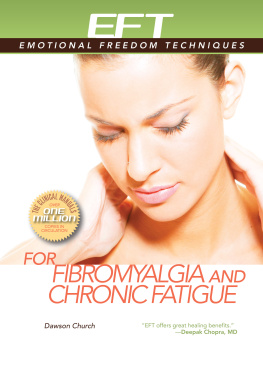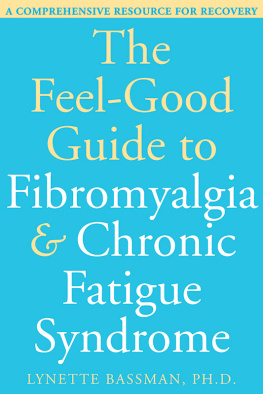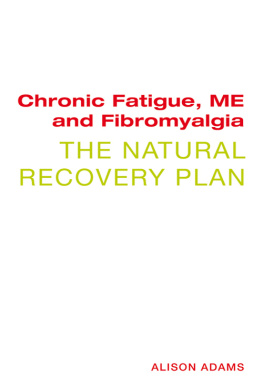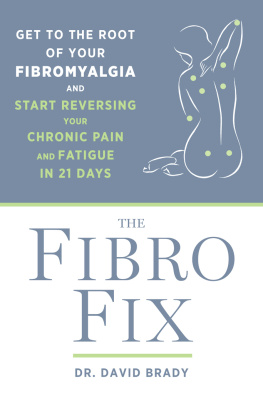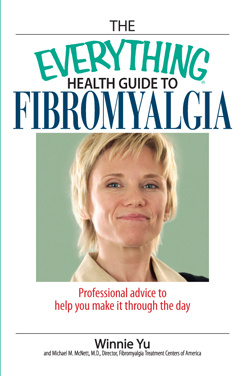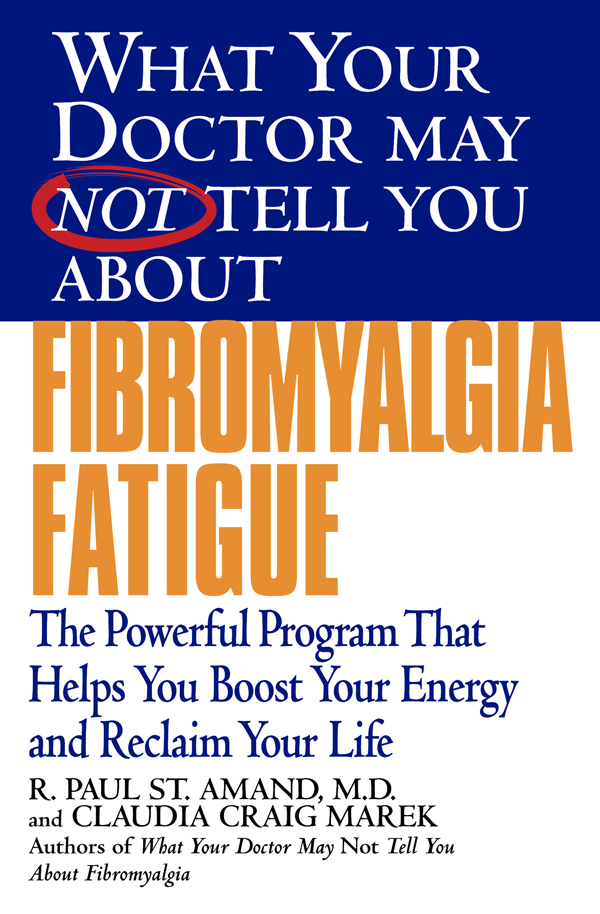PUBLISHERS NOTE: The information herein is not intended to replace the services of trained health professionals or be a substitute for medical advice. You are advised to consult with your health care professional with regard to matters relating to your health, and in particular regarding matters that may require diagnosis or medical attention.
Copyright 2012 by The St. Amand Trust, Claudia Craig Marek, and Mari Florence
All rights reserved. In accordance with the U.S. Copyright Act of 1976, the scanning, uploading, and electronic sharing of any part of this book without the permission of the publisher constitute unlawful piracy and theft of the authors intellectual property. If you would like to use material from the book (other than for review purposes), prior written permission must be obtained by contacting the publisher at permissions@hbgusa.com. Thank you for your support of the authors rights.
Grand Central Life & Style is an imprint of Grand Central Publishing.
The Grand Central Life & Style name and logo are trademarks of Hachette Book Group, Inc.
The Hachette Speakers Bureau provides a wide range of authors for speaking events. To find out more, go to www.hachettespeakersbureau.com or call (866) 376-6591.
The publisher is not responsible for websites (or their content) that are not owned by the publisher.
HOW DO I KNOW IF I HAVE FIBROMYALGIA?
Patients suffering from fibromyalgia experience a variety of painful and debilitating symptoms, including chronic fatigue, joint and muscle pain, chronic bladder and vaginal infections, depression, insomnia, and disorientation.
WHAT WERE THE TRADITIONAL REMEDIES?
Recognized as a disease by the World Health Organization in 1993, fibromyalgia has been treated in the past with medications, including antidepressants, analgesics, and narcotics, to relieve symptoms. These remedies have not worked for everyone.
WHATS SO SPECIAL ABOUT GUAIFENESIN?
Guaifenesin is an inexpensive medication used in over-the-counter cough medicines. But in his studies, Dr. St. Amand discovered that this drug, taken in the proper dosage, is the first effective treatment for reversing fibromyalgiawith no known side effects. Recently, the drug has become more available in new formulations and dosagessold, in some cases, over the counter.
WHERE CAN I TURN FOR MORE INFORMATIONAND SUPPORT?
Dr. St. Amand is the countrys foremost expert on this subject and is himself a past sufferer of the disease. Drawing on Dr. St. Amands firsthand experience and filled with the latest research on the subject, this book also offers complete and newly revised and updated appendices that include Internet user groups and dozens of support organizations for people with fibromyalgia and for those using guaifenesin.
Dr. St. Amands unique approach to fibromyalgia gives patients who have run out of treatment options a new hope A revelation to fibromyalgics.
Miryam Ehrlich Williamson, author of Fibromyalgia: A Comprehensive Approach and The Fibromyalgia Relief Book
Offers a clear road map out of the wilderness of fibromyalgia pain and fatigue.
Kendall Gerdes, MD, former president, American Academy of Environmental Medicine
Ive been using guaifenesin and the protocol in this book in my practice for seven years. The results have been amazing! If you have fibromyalgia I strongly recommend you buy this book and begin treatment immediately.
C. Ronald McBride, MD, assistant clinical professor of medicine, UCLA Medical Group
The first edition of this book was written with some hesitation. The focus of my practice had always been on helping the patients who came to me directly. In the past, I avoided publicity for my work because of the controversy I knew would arise from treating a no-name illness that other doctors didnt believe existed. Because of this, I even hesitated to discuss this strange illness with my colleagues and the large medical group I headed. But I soon realized that I had no choice but to ignore their skepticism, because results are what really count in medicineand I was getting them.
In those early days, however, I was on my own. I drew sketches to help my patients better understand their disease and the course of treatment I recommended. The fibrofogged needed something written to facilitate understanding and to placate long-suffering families. So I wrote a few descriptive papers that got copied and circulated again and again. I didnt anticipate how many people they would reach. Patients began coming from different parts of the United States, even from around the world.
When the name fibromyalgia was coined about twenty-seven years ago, I gratefully adopted this classificationmisnomer though it was! A terribly common illness that had previously existed only in obscurity suddenly had a name. The term was not immediately embraced, but it gained acceptance from rheumatologists and open-minded members of the medical community. This emboldened me to more militantly champion the illness. Although my approach might have seemed unconventional, I had already been using it for more than twenty-three years.
Slowly, a consensus party line of preferred treatment emerged, but it has always ignored our successful protocol. A few physicians tried to follow our program, but mostly got lost trying to teach patients how to avoid myriad sources of salicylate. (Youll learn about this hideous, ongoing problem soon enough!) I was increasingly asked to speak and write about fibromyalgia. Patients told us about their experiences and we listened. We learned about associated conditions, most prevalent being hypoglycemia (or low blood sugar). The sickest ones certainly had a depth of knowledge about their disease spectrum.
As I studied and learned more about this newly named fibromyalgia, I realized that I also had it. Later, I was able to identify the condition as one of my fathers legacies. It was he who wielded the gene(s) passed on to my two sisters and me. I, in turn, passed it on, and each of my three daughters developed serial symptoms. Illnesses take on special significance when they strike near to home. Probably my familys health concerns sharpened my skills; fine honing became mandatory.
Over the ensuing years, Id found four effective medications. Their side effects kept me looking for something safer, which is what we now have in the compound guaifenesin. Imagine how success with the very first medication would stir me to ask why it worked. This why? led to possibilities and then to theories, which I occasionally modified, and will continue to do. Of course, a theory is merely a supposition based on as much fact as can be garnered. This search keeps me poring over esoteric papersfinally some of our ownlooking for insights into cellular physiology to test and embellish our hypotheses. Please appreciate the fact that whatever errors might exist in my theories dont diminish the efficacy of the treatment. Perhaps a simpler statement is: What works, works. In fact, the heart of my approach is so basic that it can be stated in a simple quartet of phrases:


